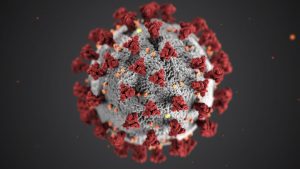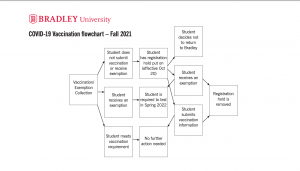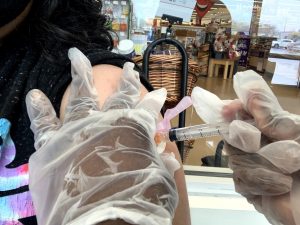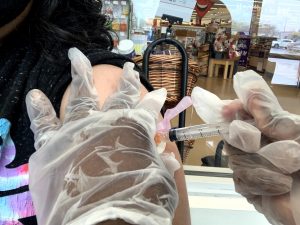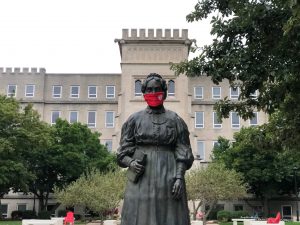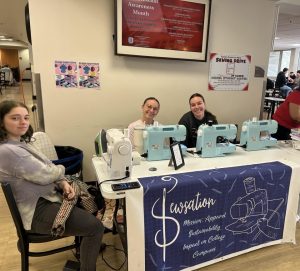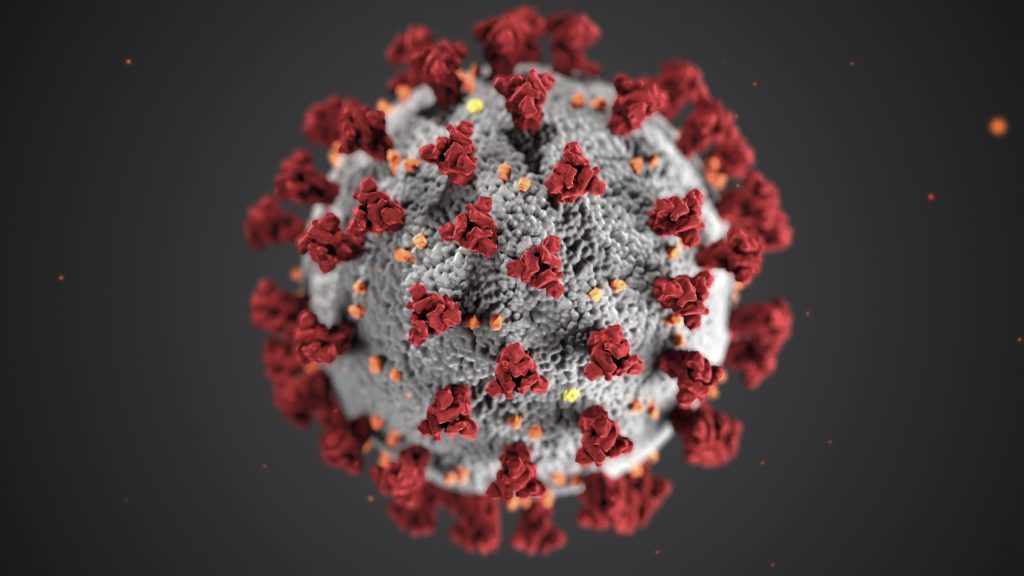
In mid-summer, the university announced its plans to return to campus in the fall of 2020, along with schools like Illinois State University and the University of Illinois system. On July 29, the university released its COVID-19 surveillance testing procedures.
The goal was to randomly select anywhere from 250 to 300 students each week to undergo nasal swab testing in order to gauge the prevalence of COVID-19. Those selected each week were notified via email and were then expected to book an appointment online through Bradley Health Services at no cost.
The July 29 email also included considerations in moving online, which were too many positive tests to self-isolate, not screening fast enough or lack of personal protective equipment (PPE).
In-person learning was only possible so long as Illinois remained in Phase 4 of Gov. Pritzker’s Restore Illinois plan. These considerations were to be compounded with external factors in the Peoria area like availability in the local hospitals, the rise of flu-like illnesses, the rise of positive cases, shortages of PPE and the inability to keep testing people.
First semester: an initial spike
During the first full week of the fall 2020 semester, the university tested 349 students and nine tests returned positive for COVID-19, making the average positivity rate 2.58 percent.
The following weeks saw a steady increase in cases.
On the week of Sept. 3, the average positivity rate rose to 8.33 percent after 18 of 216 tests were positive.
As a result of this spike, the university enacted an “all-student quarantine” from Sept. 8 to Sept. 23 in which all in-person classes were to be conducted online and students were to leave their residences only for essential errands.
The rate nearly doubled on the week of Sept. 10 at 14.46 percent, when 47 of 325 tested positive. The escalation reached its peak — and the highest positivity rate as of publication — the week of Sept. 17 at 16.40 percent.
Cases dropped significantly during the all-student quarantine. The university reported an 8.98 percent positivity rate the week of Sept. 24 after 23 cases resulted from 256 tests.
The rest of the fall semester’s weekly positivity rates did not surpass 5.84 percent, which was reported on the week of Nov. 12.
Second semester: relatively low rates
According to University Spokesperson Renee, Charles, the Virus Response Team felt it had a firmer grasp on effective strategy and implementation after the first semester.
“We learned some valuable lessons from the past year and heard loud and clear from students how consistency was important,” Charles said. “Our entry strategy of tight restrictions at the start and then loosening for the spring was derived from these lessons.”
On Jan. 12, the university announced an initial two-week all-campus quarantine to begin the second semester. During this time, the university planned to test more students — with a target of 500 — in an effort to better assess the prevalence of COVID-19 following the extended winter break.
Quarantine restrictions, including the delay of in-person classes, were lifted on Feb. 8 after only two positive cases from 498 tests the week of Jan. 28 and one positive case of 580 the week of Feb. 24.
The semester’s first six weeks of positivity rates did not exceed one percent. As of publication, the highest recorded weekly positivity rate during the second semester was on April 1 at 4.35 percent after 17 of 391 students tested positive.
